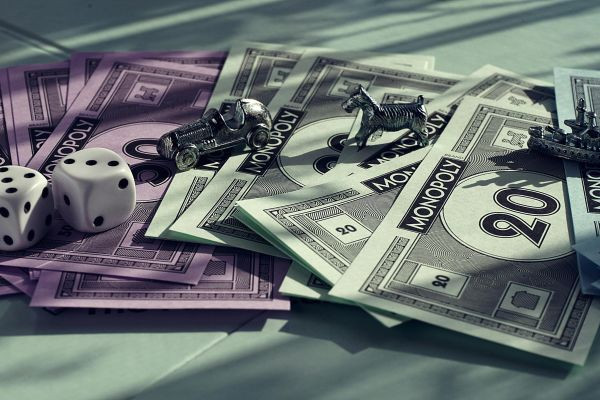Video games have evolved from solitary activities to become massive social experiences that connect people around the world. From competitive online battles and cooperative missions to casual chats wi..
11/30/24 • 264 Views
Video games have evolved from solitary activities to become massive social experiences that connect people around the world. From competitive online battles and cooperative missions to casual chats with friends, gaming platforms are no longer just about gameplay but are now hubs for social interaction. Gaming developers are focusing more on further development of social features for their platforms. Such that growing and connecting with others is considered a central aspect of the gaming experience. How gaming platforms are changing toward social interaction and why this change is changing online relationships is our discussion in this article.
The Emergence of Multiplayer Online and Communities:
This process of gaming changing from a single-player activity to a multi-player one began with the development of online multiplayer games, such as World of Warcraft and Counter-Strike, in the early 2000s. Thousands of gamers from all over the world were brought together, competing, cooperating, and communicating in real time. This marked a turning point in the gaming industry, where the experience was not limited to one player or local co-op but spread to millions of players within dynamic online environments.
Online gaming has become its very own social ecosystem; apart from playing together, online gamers form communities. Game play is no longer just about the mere act of playing; the virtual spaces, either through guilds, clans, or online groups, give space for players to interact among them, through in-game chats and even voice communications, on occasions, live-streaming sites develop relationships that cut geographical bars.
Voice Chat and Live Real-Time Communication:
Among gaming innovations through which social interaction is brought about, voice chat must be one of the most prominent. In real time, communication keeps the experience and participation connected and coordinated. Voice chat within gameplay is widely supported in most popular games about multiplayer, such as Fortnite, Call of Duty, and Overwatch, to strategize even as people discuss camaraderie with teammates for sessions.
Voice chat plays a great role in the community because, in games, teamwork is quite an important necessity, and in more than just objectives, they focus on conversations, cracking of jokes, and befriending people whom they may end up having for the rest of their lives. It becomes a social activity in which some people equate this with real-time relationships due to the fact that their conversations go on as smoothly as the gameplay within it.
Social Features and Social Networks within Gaming Platforms:
The approaches on gaming platforms are increasingly becoming more social in nature towards developing richer gamer relationships. Xbox Live, PlayStation Network, and Steam feature advanced social networking capacities. Gamers can add friends to their friend list and keep in touch with fellow friends through messaging, share their accomplishments, and even present personalized profiles that express their gam. These features have now been part of the gaming experience and gamers will relate to one another not only through the game itself but also on the platform.
Steam and Epic Games Store also have in live view what friends are playing to enable spontaneous group play. The "friend list" became one of the cornerstones of modern gaming because of the ability it allows the users to follow the activities of the social circle, join games, and thus make a more connected community of gamers.
For example, gaming social networks are some examples of how gaming platforms evolve for social interaction. Discord provides means to create dedicated servers to host voice and video chats connecting like-minded players outside an individual game. It now has become the go-to place for voice communication during any gaming session and has developed beyond gaming to become a social space for hobbyists, content creators, or communities of all kinds.
The Role of Streaming and Content Creation:
Live streaming has become a major part of the social side of gaming, allowing gamers to share experiences with a wider audience. Platforms such as Twitch, YouTube Gaming, and Facebook Gaming have made gaming an activity that is no longer played by the player but by and for the viewer in real-time. These streaming sites offer gamers opportunities to broadcast their games, live chat with their followers, and develop fan bases that extend far beyond the game itself.
Streaming has also brought into play a new form of social interaction in the face of content creation. For most regular gamers streaming, community becomes a group of enthusiasts that they converse with; the streamer has an ongoing dialogue with his or her audience. The audiences in such scenarios are much more than mere passive game watchers since with virtual friendships established through interactions, therefore enjoying feelings of belonging, the participants in a game create and are a part of the shared experience.
Virtual Worlds and Social Spaces:
Except for their competitive or cooperative nature, modern gaming is gradually developing into virtual worlds in which players can also communicate in a creative manner. Hence, games like Second Life, The Sims, Roblox, and Animal Crossing enable their players to create or experience virtual spaces that will eventually project the identity, hobby, or interest of a subject. Therefore, participants can experience other aspects of social contact through games, socialization in freely roaming areas, visiting virtual events, and activities that emulate social interaction that occurs in reality.
For instance, in Animal Crossing: New Horizons, one of the most entertaining features has been established with the opening of virtual islands where all gamers can visit each other for bartering and even spend their time chatting. Virtual communities, although not necessarily competitive gaming, allow for great room for connection building and new experiences in building social interaction.
Future of Social Gaming:
The future gaming platforms will provide even more immersion and sociality. Virtual reality and augmented reality will make the social gaming experience much more interactive and lifelike. With VR gaming, for example, players can interact with each other in 3D spaces in ways not possible with traditional flat-screen gaming. As technology advances, there will be much more room for socializing in virtual spaces.
This will also mean much more personalized social interactions along with the rise of AI and machine learning. NPC's, driven by AI would be active participants in socially creating experiences as they would be adaptive enough to player behavior, and with algorithms, connecting players to playmates who share the same style of play and interests would come into play and increase the depth of sociality in it.
Conclusion:
Gaming has evolved from being a personal activity to being a rich, highly interactive social experience that ties players in different parts of the globe. From voice chat on gaming platforms to social functions on gaming platforms, streaming or virtual worlds, gaming is constantly incorporating new features into its evolution to enhance social interaction. It becomes much more exciting and social for users to make new connections or build communities. Social gaming isn't a fad, but a way of communicating that shifts the basis of connection and interaction within this new digital world.









